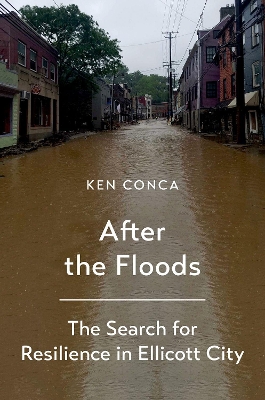Water Chemistry
 -10%
portes grátis
-10%
portes grátis
Water Chemistry
The Chemical Processes and Composition of Natural and Engineered Aquatic Systems
Arnold, William A.; Brezonik, Patrick L.
Oxford University Press Inc
11/2022
970
Dura
Inglês
9780197604700
15 a 20 dias
1592
Descrição não disponível.
Preface
Acknowledgments
Symbols and Acronyms
Symbols
Acronyms
Units for physical quantities
Important constants
Conversion Factors
Energy-related quantities
Pressure
Some useful relationships
Part I. Prologue
1 Introductory matters
2 Aqueous geochemistry I: Inorganic chemical composition of natural waters
Part II. Theory, Fundamentals, and Important Tools
3 The thermodynamic basis for equilibrium chemistry
4 Activity-concentration relationships
5 Fundamentals of chemical kinetics
6 Fundamentals of organic chemistry for environmental systems
Part III. Chemical Equilibria and Kinetics
7 Principles of acid-base equilibria
8 Solving acid-base equilibria and the carbonate system
9 Complexation reactions and metal ion speciation
10 Solubility: Reactions of solid phases with water
11 Redox equilibria and kinetics
12 Surface chemistry and sorption
13 Partitioning and chemical transformations of organic contaminants
Part IV. Chemistry of Natural Waters and Engineered Systems
14 Fundamentals of photochemistry and some applications in aquatic systems
15 Chemistry of chlorine and other oxidants/disinfectants
16 Aqueous geochemistry II: Provenance, weathering, and landscape models for natural waters
17 The minor elements: Fe, Mn, Al
18 Dissolved oxygen
19 Nutrient cycles and the chemistry of nitrogen and phosphorus
20 Natural organic matter
Appendix: Free energies and enthalpies of formation of common
chemical species
Index
Acknowledgments
Symbols and Acronyms
Symbols
Acronyms
Units for physical quantities
Important constants
Conversion Factors
Energy-related quantities
Pressure
Some useful relationships
Part I. Prologue
1 Introductory matters
2 Aqueous geochemistry I: Inorganic chemical composition of natural waters
Part II. Theory, Fundamentals, and Important Tools
3 The thermodynamic basis for equilibrium chemistry
4 Activity-concentration relationships
5 Fundamentals of chemical kinetics
6 Fundamentals of organic chemistry for environmental systems
Part III. Chemical Equilibria and Kinetics
7 Principles of acid-base equilibria
8 Solving acid-base equilibria and the carbonate system
9 Complexation reactions and metal ion speciation
10 Solubility: Reactions of solid phases with water
11 Redox equilibria and kinetics
12 Surface chemistry and sorption
13 Partitioning and chemical transformations of organic contaminants
Part IV. Chemistry of Natural Waters and Engineered Systems
14 Fundamentals of photochemistry and some applications in aquatic systems
15 Chemistry of chlorine and other oxidants/disinfectants
16 Aqueous geochemistry II: Provenance, weathering, and landscape models for natural waters
17 The minor elements: Fe, Mn, Al
18 Dissolved oxygen
19 Nutrient cycles and the chemistry of nitrogen and phosphorus
20 Natural organic matter
Appendix: Free energies and enthalpies of formation of common
chemical species
Index
Este título pertence ao(s) assunto(s) indicados(s). Para ver outros títulos clique no assunto desejado.
Preface
Acknowledgments
Symbols and Acronyms
Symbols
Acronyms
Units for physical quantities
Important constants
Conversion Factors
Energy-related quantities
Pressure
Some useful relationships
Part I. Prologue
1 Introductory matters
2 Aqueous geochemistry I: Inorganic chemical composition of natural waters
Part II. Theory, Fundamentals, and Important Tools
3 The thermodynamic basis for equilibrium chemistry
4 Activity-concentration relationships
5 Fundamentals of chemical kinetics
6 Fundamentals of organic chemistry for environmental systems
Part III. Chemical Equilibria and Kinetics
7 Principles of acid-base equilibria
8 Solving acid-base equilibria and the carbonate system
9 Complexation reactions and metal ion speciation
10 Solubility: Reactions of solid phases with water
11 Redox equilibria and kinetics
12 Surface chemistry and sorption
13 Partitioning and chemical transformations of organic contaminants
Part IV. Chemistry of Natural Waters and Engineered Systems
14 Fundamentals of photochemistry and some applications in aquatic systems
15 Chemistry of chlorine and other oxidants/disinfectants
16 Aqueous geochemistry II: Provenance, weathering, and landscape models for natural waters
17 The minor elements: Fe, Mn, Al
18 Dissolved oxygen
19 Nutrient cycles and the chemistry of nitrogen and phosphorus
20 Natural organic matter
Appendix: Free energies and enthalpies of formation of common
chemical species
Index
Acknowledgments
Symbols and Acronyms
Symbols
Acronyms
Units for physical quantities
Important constants
Conversion Factors
Energy-related quantities
Pressure
Some useful relationships
Part I. Prologue
1 Introductory matters
2 Aqueous geochemistry I: Inorganic chemical composition of natural waters
Part II. Theory, Fundamentals, and Important Tools
3 The thermodynamic basis for equilibrium chemistry
4 Activity-concentration relationships
5 Fundamentals of chemical kinetics
6 Fundamentals of organic chemistry for environmental systems
Part III. Chemical Equilibria and Kinetics
7 Principles of acid-base equilibria
8 Solving acid-base equilibria and the carbonate system
9 Complexation reactions and metal ion speciation
10 Solubility: Reactions of solid phases with water
11 Redox equilibria and kinetics
12 Surface chemistry and sorption
13 Partitioning and chemical transformations of organic contaminants
Part IV. Chemistry of Natural Waters and Engineered Systems
14 Fundamentals of photochemistry and some applications in aquatic systems
15 Chemistry of chlorine and other oxidants/disinfectants
16 Aqueous geochemistry II: Provenance, weathering, and landscape models for natural waters
17 The minor elements: Fe, Mn, Al
18 Dissolved oxygen
19 Nutrient cycles and the chemistry of nitrogen and phosphorus
20 Natural organic matter
Appendix: Free energies and enthalpies of formation of common
chemical species
Index
Este título pertence ao(s) assunto(s) indicados(s). Para ver outros títulos clique no assunto desejado.







